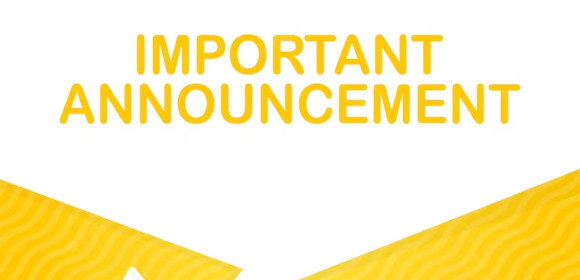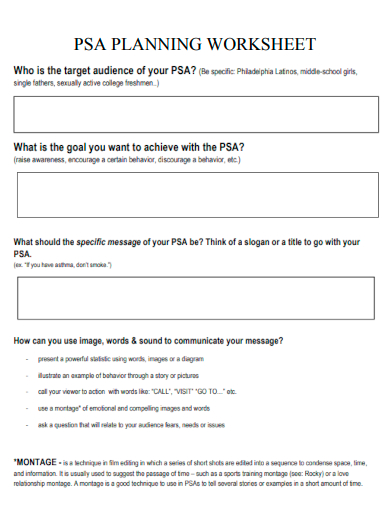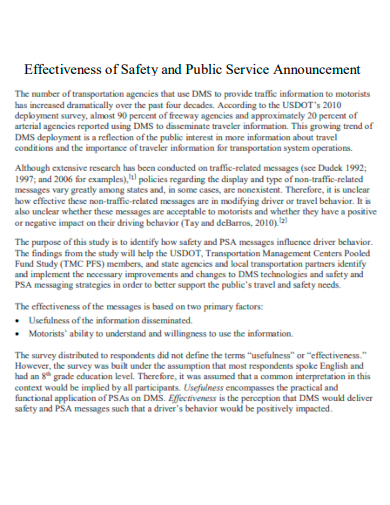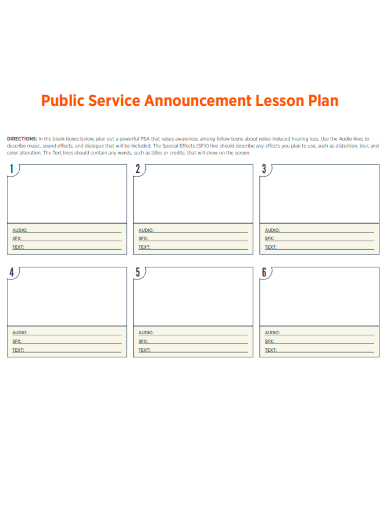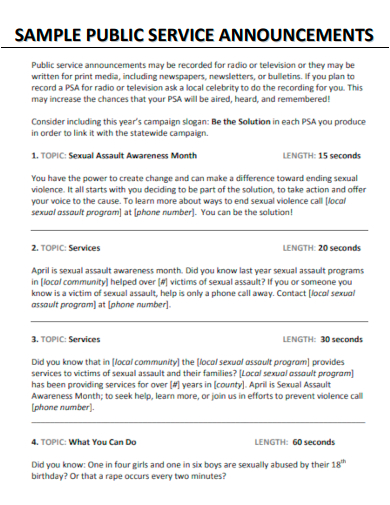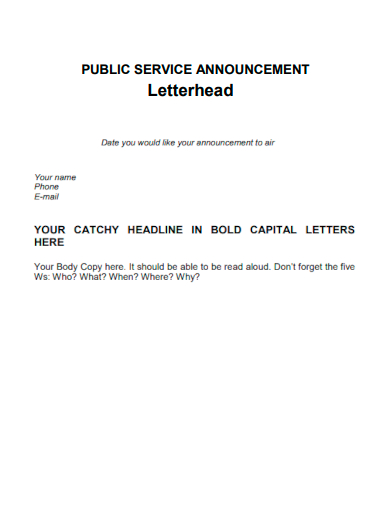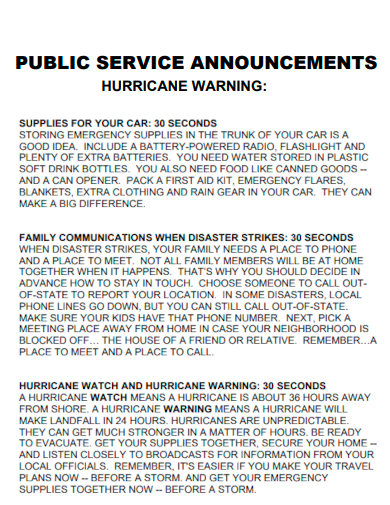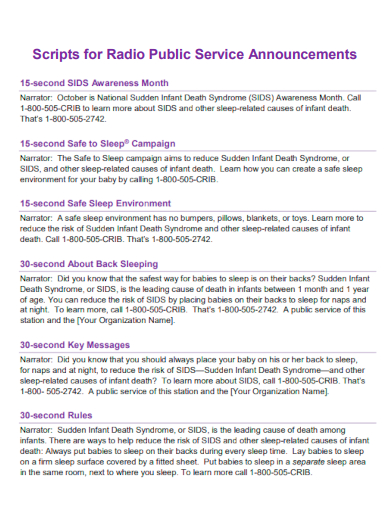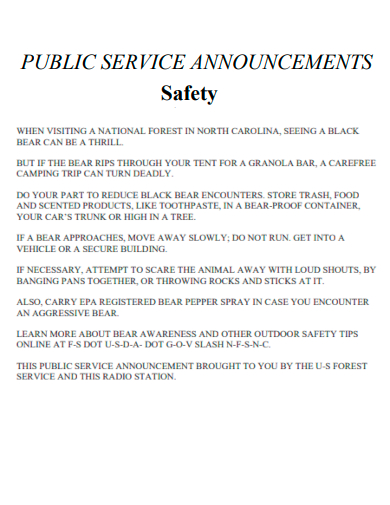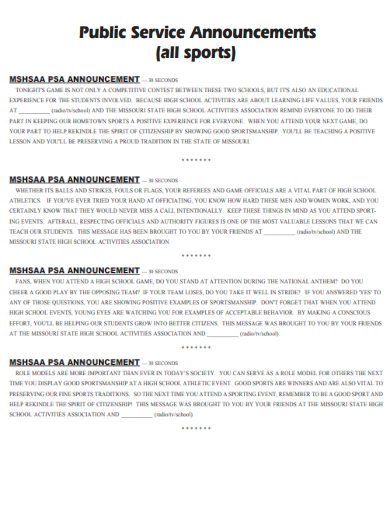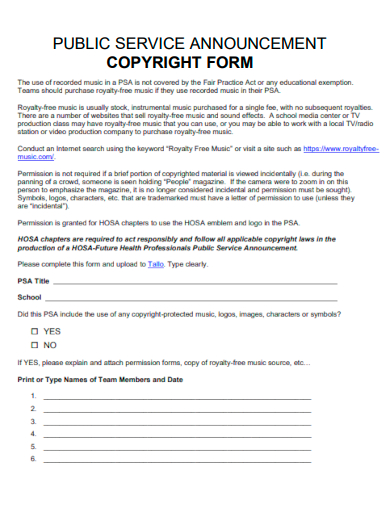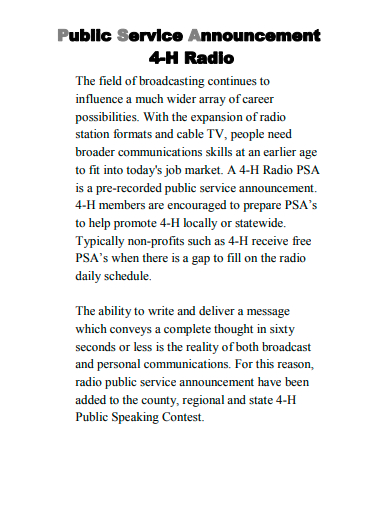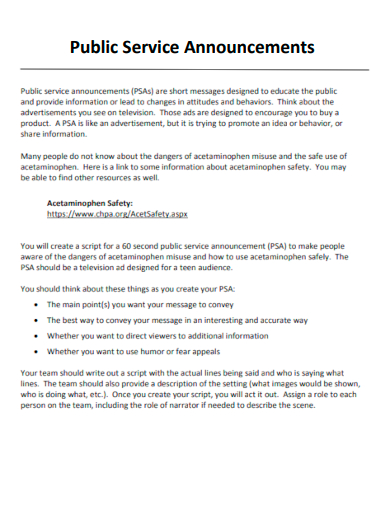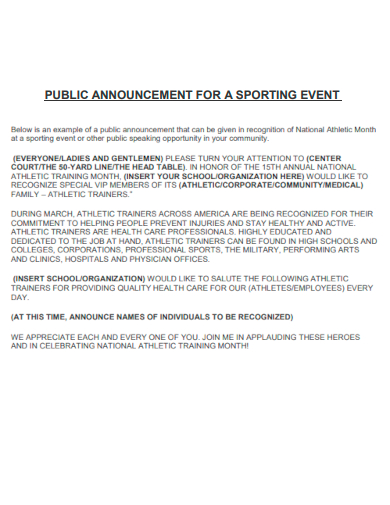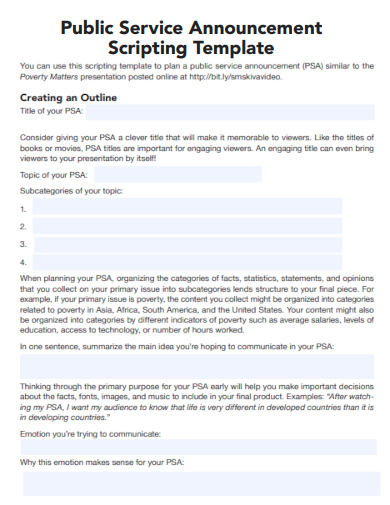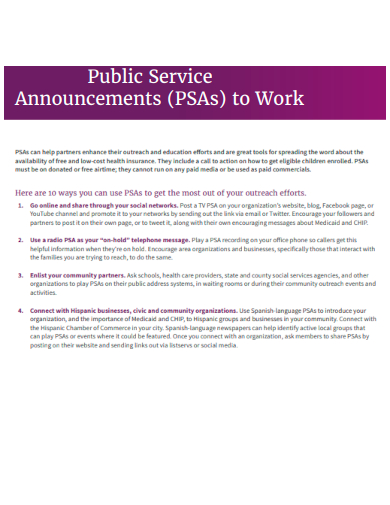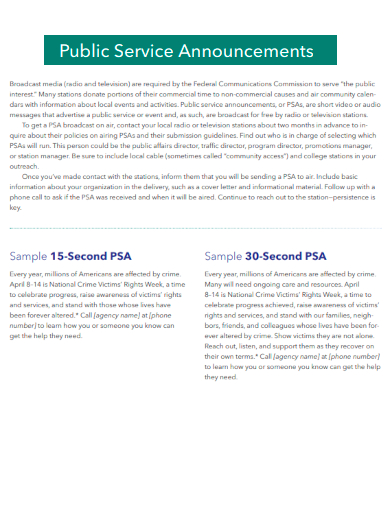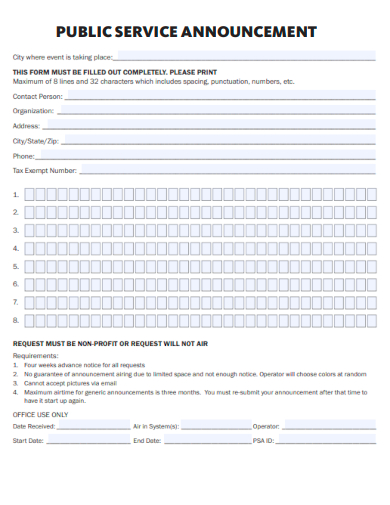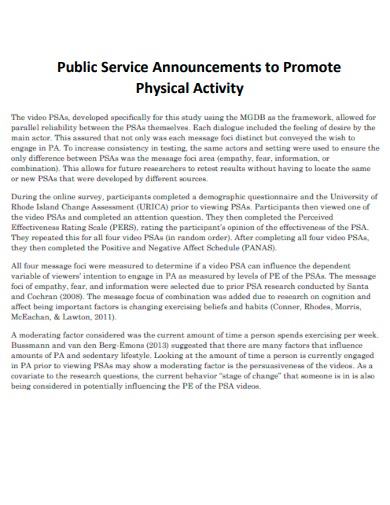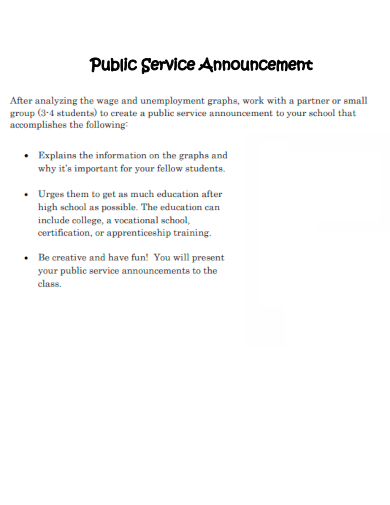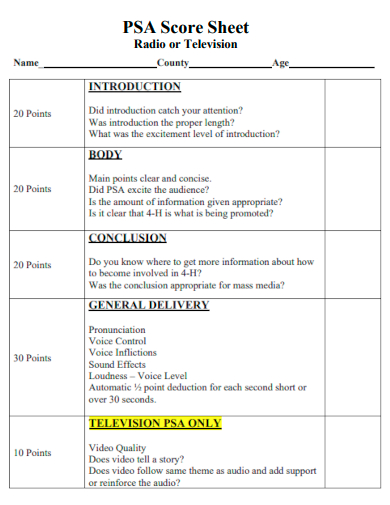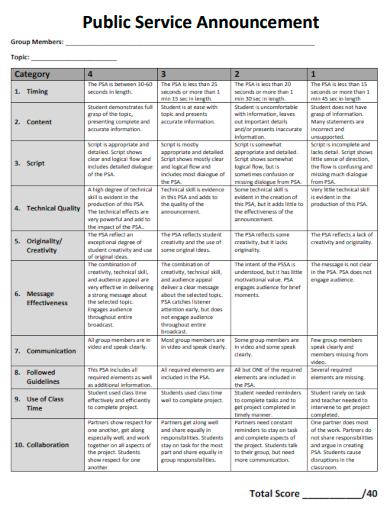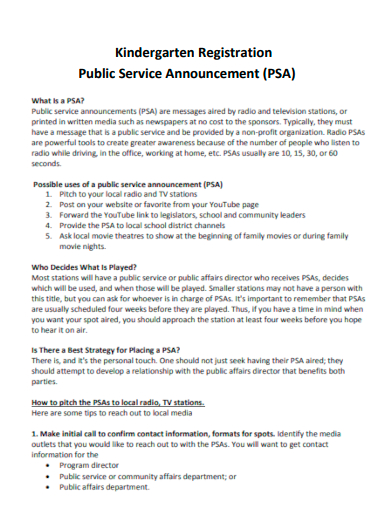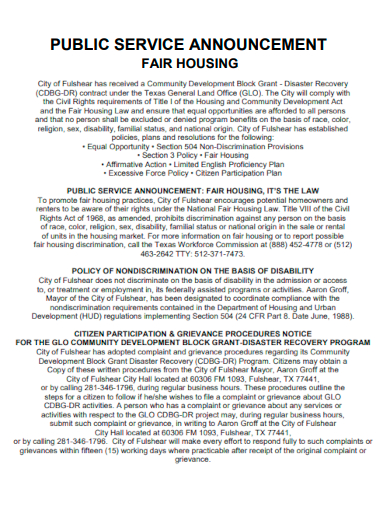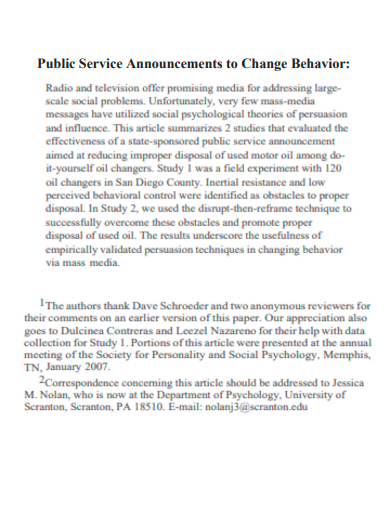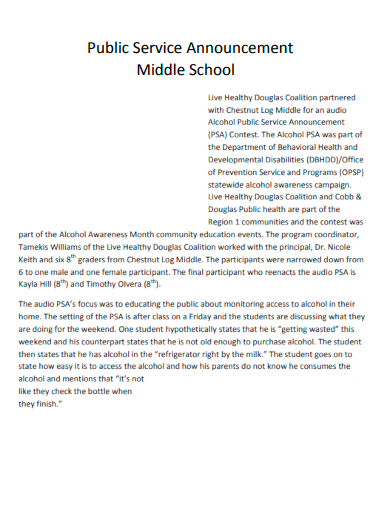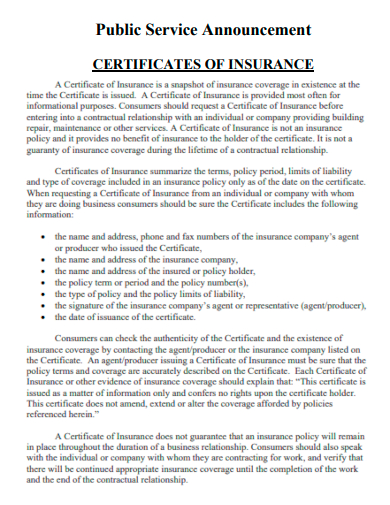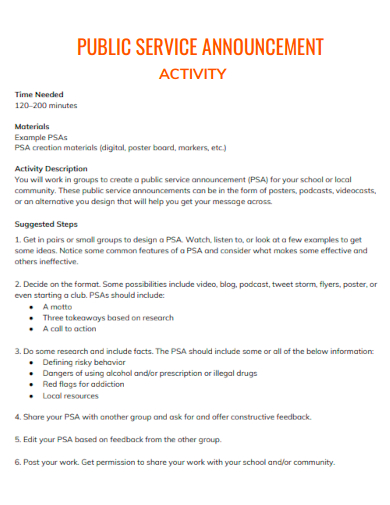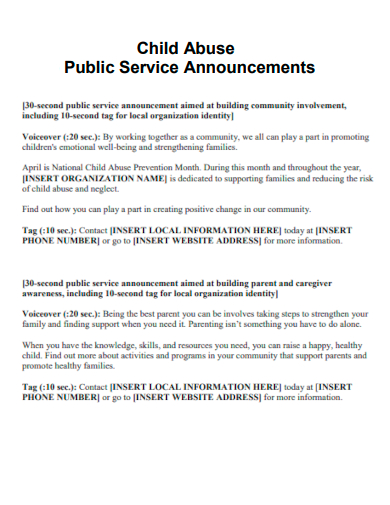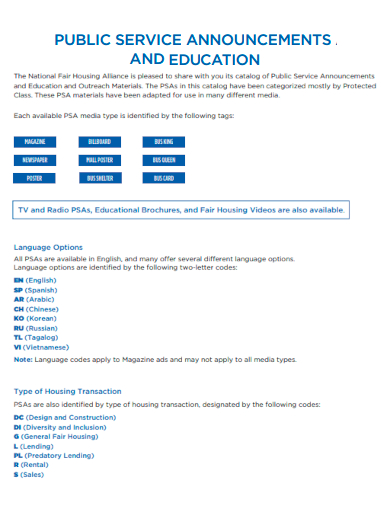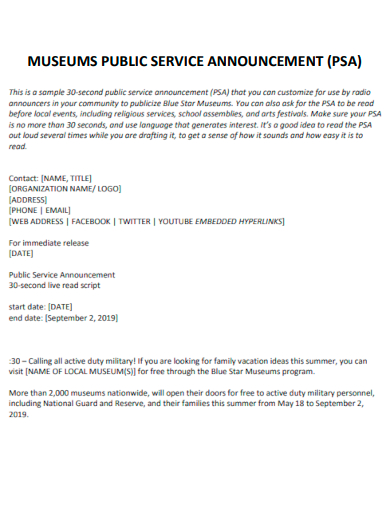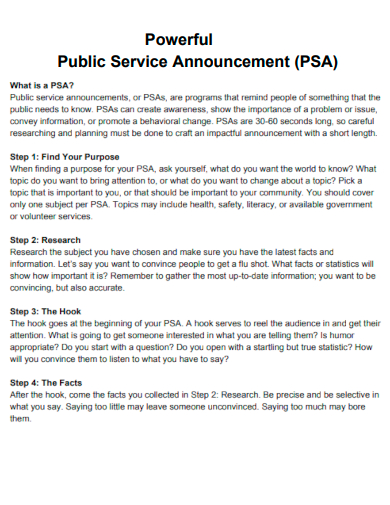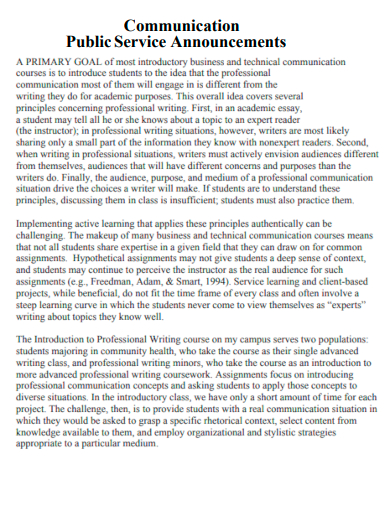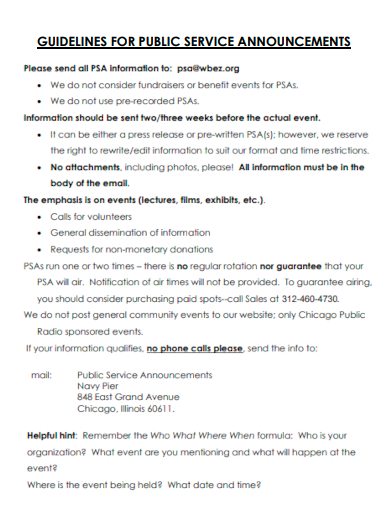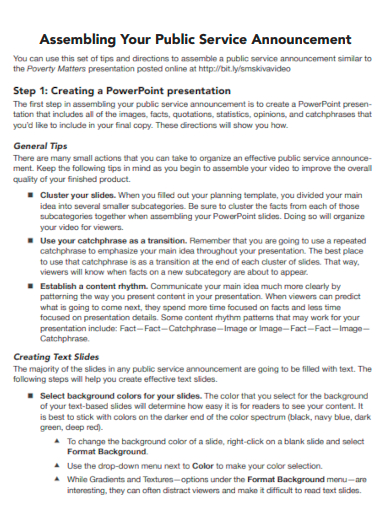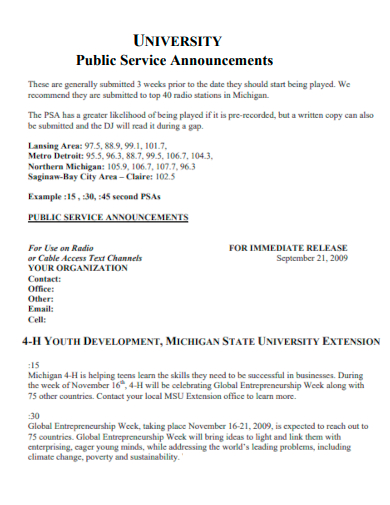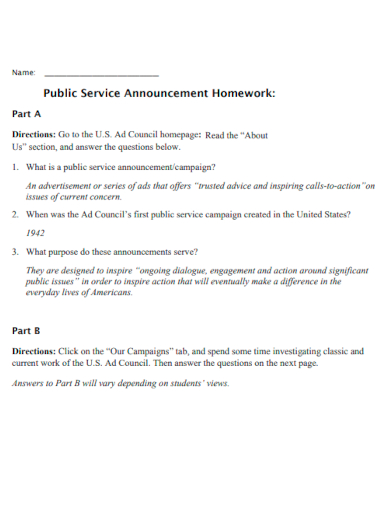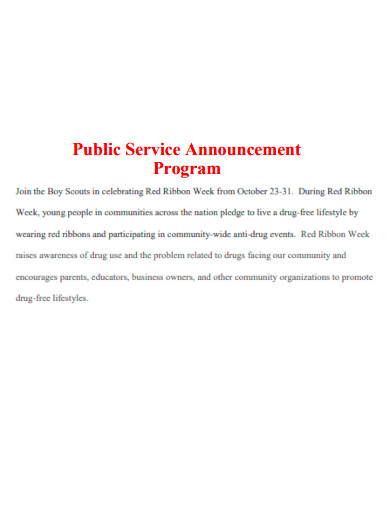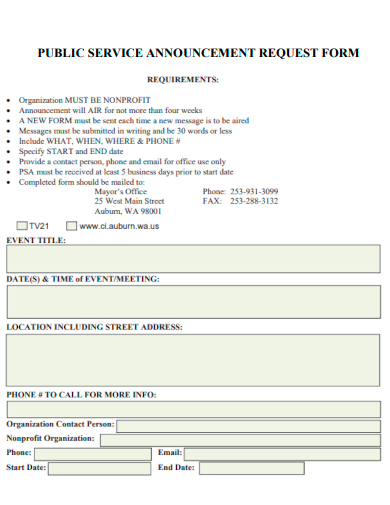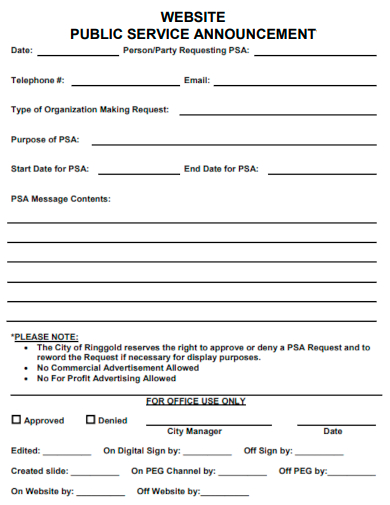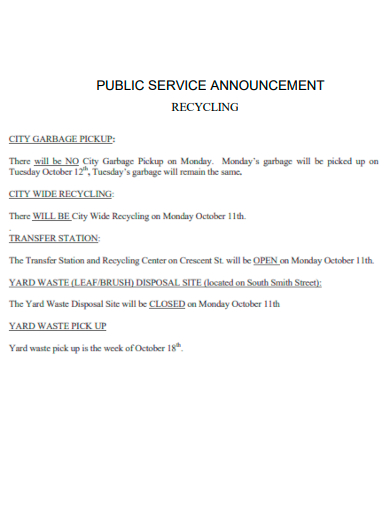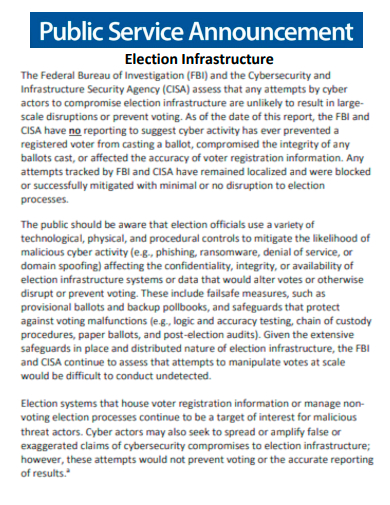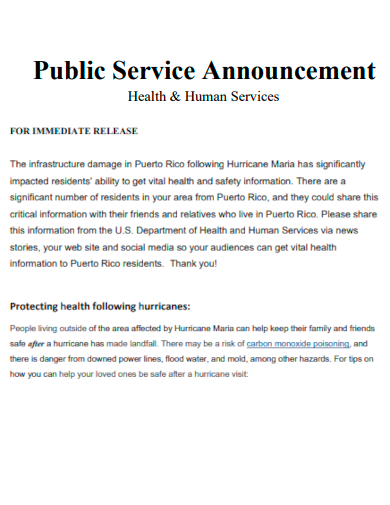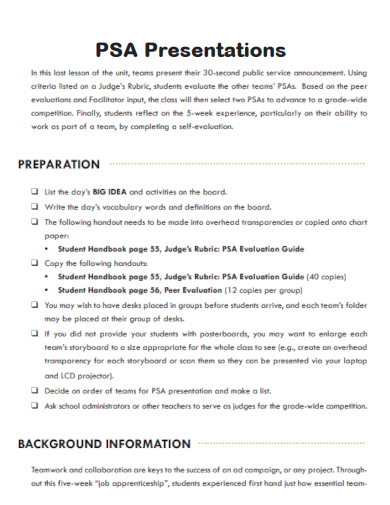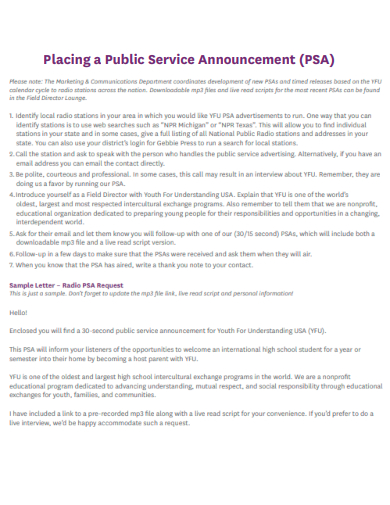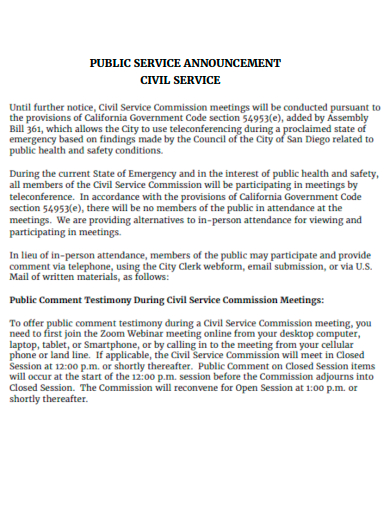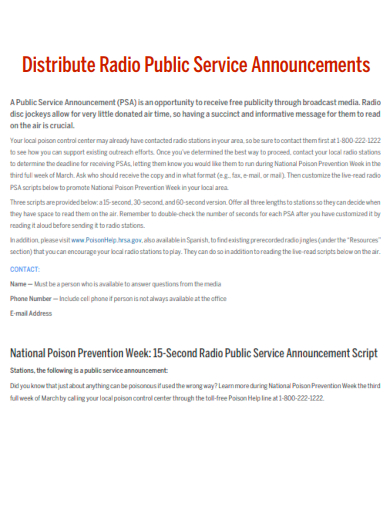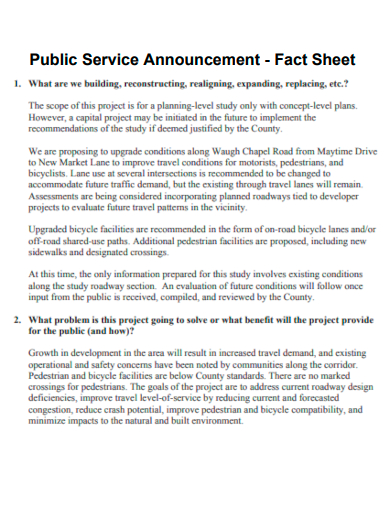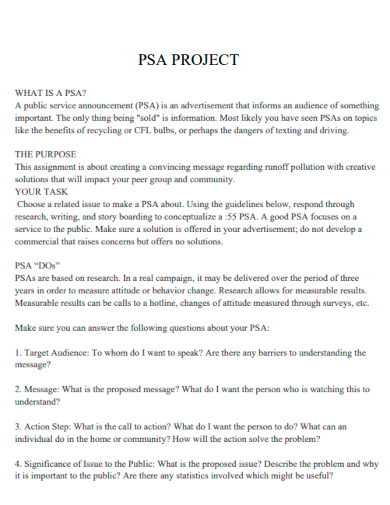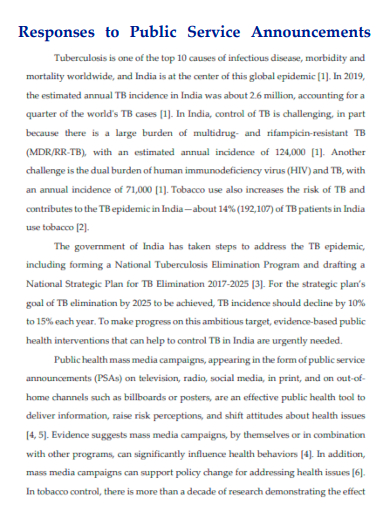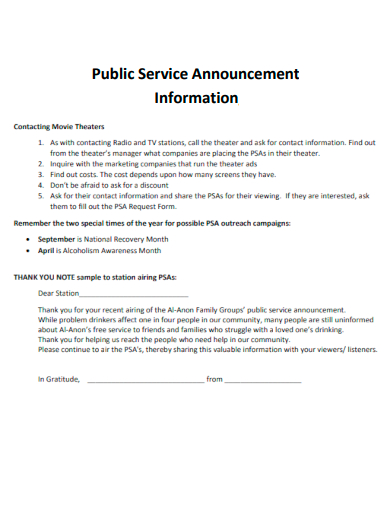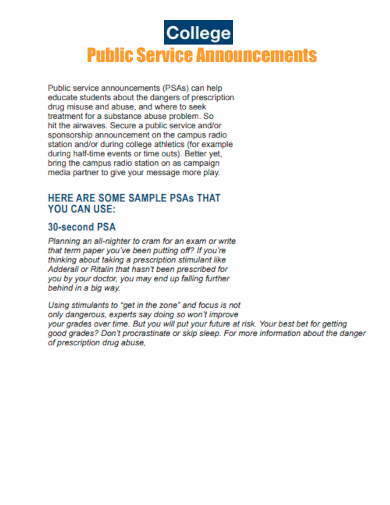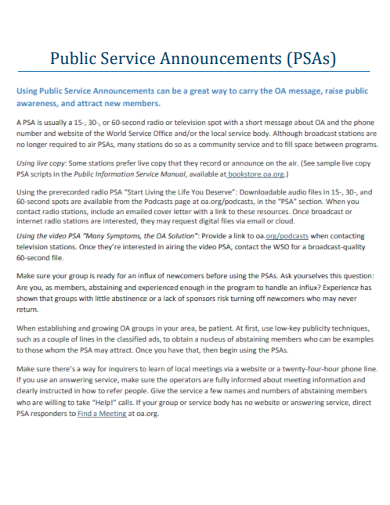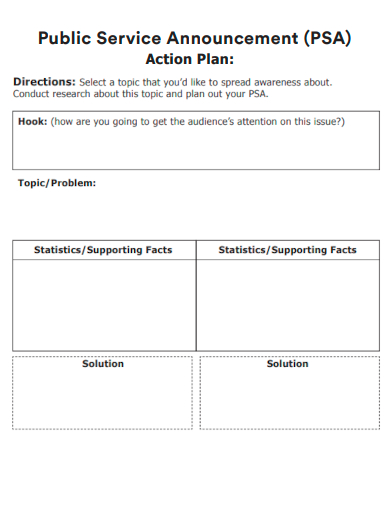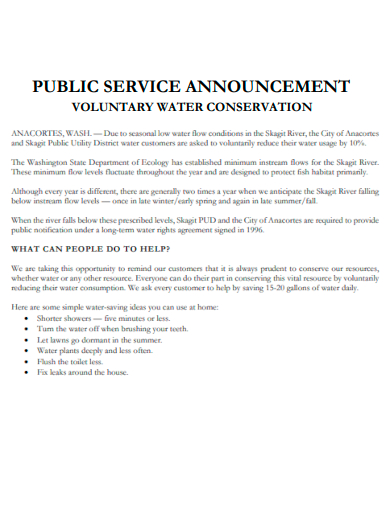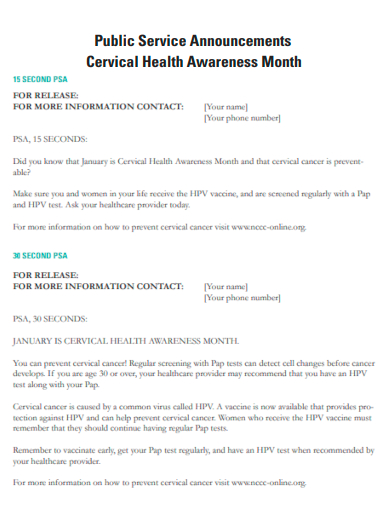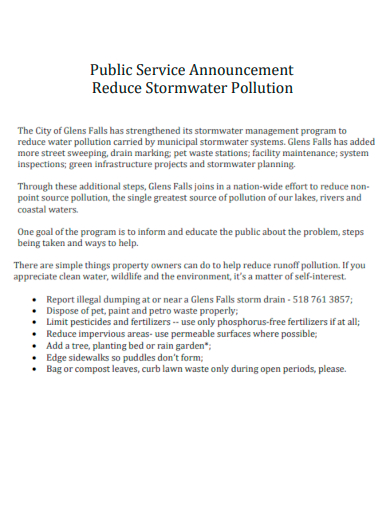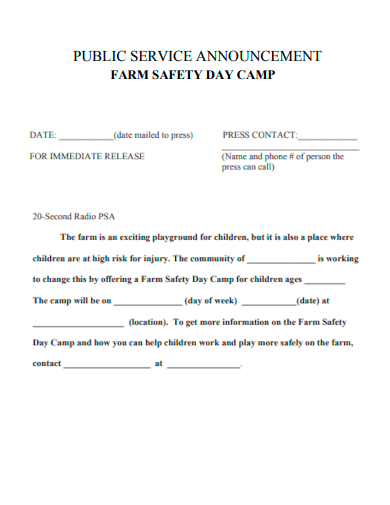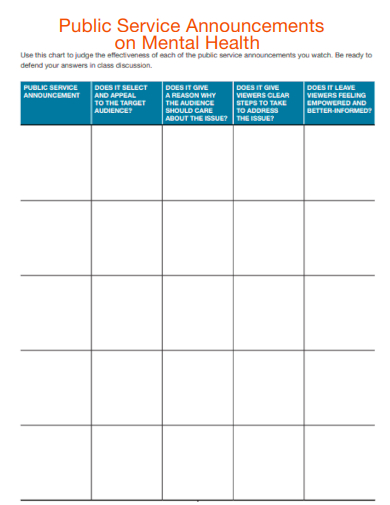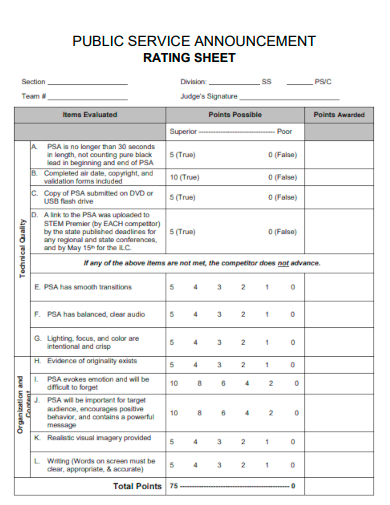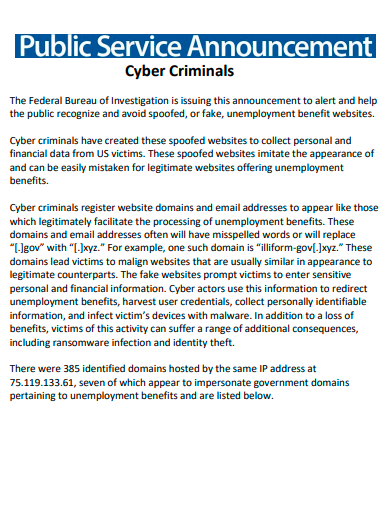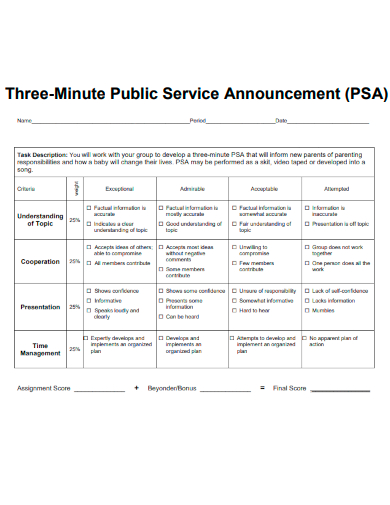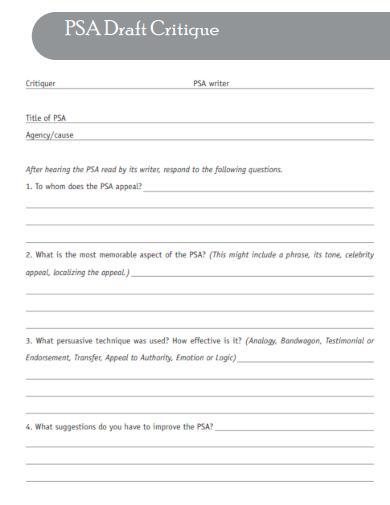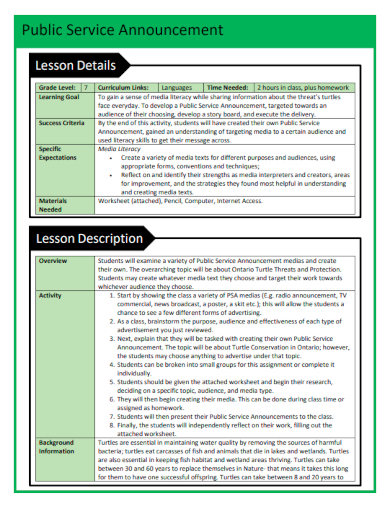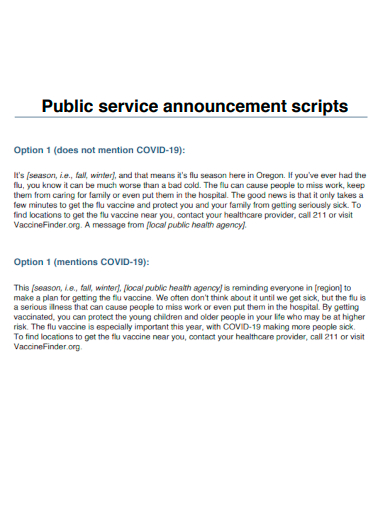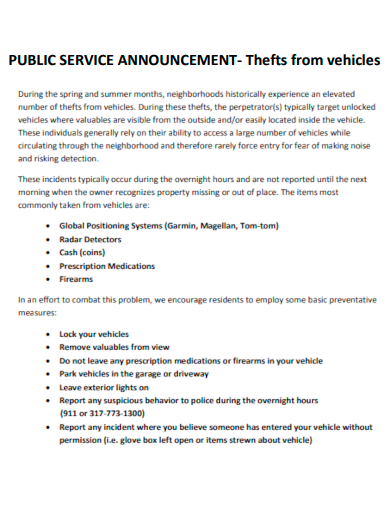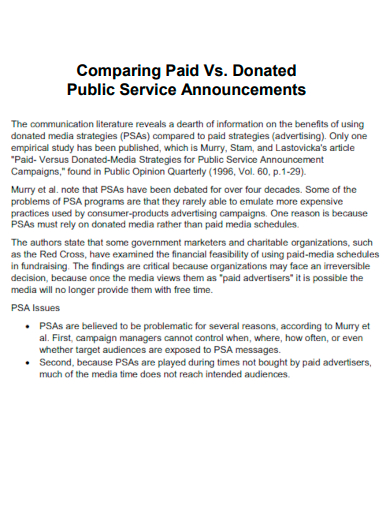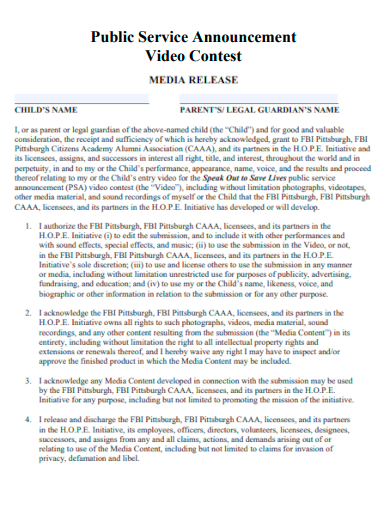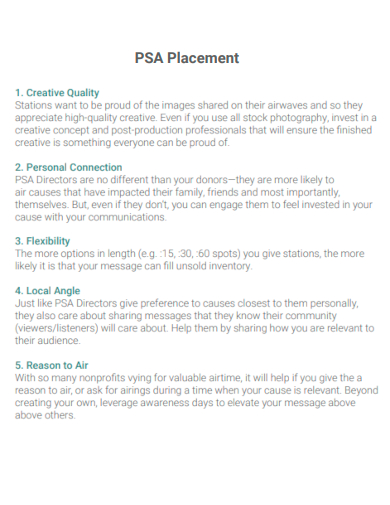73+ Public Service Announcement Examples to Download
The screen goes black and the words “This is a Public Service Announcement” flash across the screenplay. The music starts, and a voiceover begins to speak. The message is clear: this is not a typical commercial, but a call to action on an issue that affects us all. Public Service Announcements (PSAs) have been used for decades to raise awareness and promote social change. Whether it’s urging people to quit smoking, buckle up, or recycle, PSAs have the power to influence behavior and make a real impact. In this article, we’ll take a closer look at the world of PSAs, their history, and the ways in which they can be effective in shaping public attitudes and behavior.
1. PSA Planning Worksheet
2. Effectiveness of Safety and Public Service Announcement
3. PSA Lesson Plan
4. Creating Your Own Video PSA
5. Sample Public Service Announcement
6. Public Service Announcement Letterhead
7. PSA Hurricane Warning
8. Scripts for Radio Public Service Announcements
9. Public Service Announcement Safety
10. Sports Public Service Announcement
11. PSA Copyright Form
12. PSA 4H Radio
13. Basic Public Service Announcement
14. Public Announcement for a Sporting Event
15. PSA Based on News Release
16. Public Service Announcement Scripting
17. PSA to Work
18. Public Service Announcement Example
19. Radio PSA Script
20. Formal Public Service Announcement
21. PSA to Promote Physical Activity
22. Standard Public Service Announcement
23. PSA Score Sheet
24. Group Public Service Announcement
25. Kindergarten Registration PSA
26. Fair Housing PSA
27. PSAs to Change Behavior
28. PSA Holiday Season
29. PSA Middle School
30. PSA Certificate of Insurance
31. Public Service Announcement Activity
32. Child Abuse PSA
33. Public Service Announcement and Education
34. Museums Public Service Announcement
35. Powerful Public Service Announcement
36. Communication PSA
37. Guidelines for PSA
38. Assembling Your PSA
39. University Public Service Announcement
40. Public Service Announcement Homework
41. Public Service Announcement Program
42. PSA Request Form
43. Website Public Service Announcement
44. Recycling Public Service Announcement
45. Tobacco Free Public Service Announcement
46. PSA Election Infrastructure
47. Health & Human Services PSA
48. PSA Presentations
49. Placing a Public Service Announcement
50. Civil Service PSA
51. Distribute Radio PSA
52. Public Service Announcement Fact Sheet
53. PSA Project
54. Responses to Public Service Announcements
55. Public Service Announcement Information
56. College Public Service Announcements
57. Simple Public Service Announcement
58. Public Service Announcement Action Plan
59. Voluntary Water Conservation PSA
60. PSA for Cervical Health Awareness Month
61. Reduce Stormwater Pollution PSA
62. PSA Farm Safety Day Camp
63. PSA on Mental Health
64. Public Service Announcement Rating Sheet
65. PSA Cyber Criminals
66. Public Service Announcement Checklist
67. Three Minute Public Service Announcement
68. PSA Draft Critique
69. Public Service Announcement Poster
70. Public Service Announcement Lesson
71. Public Service Announcement Scripts
72. PSA Thefts from Vehicles
73. Comparing Paid Vs. Donated PSA
74. PSA 30 Second Announcement
75. Public Service Announcement Video Contest
76. PSA Placement
What is Public Service Announcement?
A Public Service Announcement (PSA) is a type of message used to raise awareness and educate the public about important social issues. PSAs are typically distributed through various media channels, such as television, radio, print, and social media, and are often produced by government agencies, nonprofit organizations, or advocacy groups. The purpose of a PSA is to inform the public about issues that affect them and to encourage them to take specific actions to address those issues. PSAs cover a wide range of topics, from public health and safety to environmental issues, social justice, and civic engagement. They can be educational, persuasive, or both, and often aim to inspire people to make positive changes in their own lives or in their communities.
How to do a Public Service Announcement
If you’re interested in creating a Public Service Announcement (PSA), here are some steps to consider:
Step 1: Identify the issue
The first step in creating a PSA is to identify the issue you want to address. Choose a topic that is relevant, important, and impactful to your target audience.
Step 2: Determine your audience
Once you have identified the issue, you need to determine your target audience. Who are you trying to reach with your message? What are their demographics, interests, and values?
Step 3: Develop your message
Your message should be clear, concise, and compelling. It should communicate the importance of the issue, and inspire your audience to take action. Consider using storytelling, humor, sociological imagination, or other creative elements to make your message more engaging.
Step 4: Choose your media channel
Decide on the media channel you want to use to distribute your PSA. This could be television, radio, social media marketing, print, or a combination of these.
Step 5: Produce your PSA
Produce your PSA using a professional team or by yourself if you have the necessary skills. Your PSA should be visually appealing, with clear a and strong visuals. Consider using a celebrity or public figure to increase the reach of your message.
Step 6: Distribute your PSA
Once your PSA is complete, distribute it through the media channels you have chosen. Make sure to target your audience effectively and measure the impact of your PSA.
FAQs
What makes a good Public Service Announcement (PSA)?
A good PSA is one that effectively communicates its message to its target audience in a clear, concise, and compelling manner. It should raise awareness about an important issue and inspire action to address that issue. A successful PSA is also visually appealing, with strong a and visuals that grab the viewer’s attention.
Can a Public Service Announcement be used for commercial purposes?
No, a PSA is not intended for commercial purposes. Its purpose is to raise awareness about an important social issue and inspire action. PSAs are usually produced by nonprofit organizations or government agencies, and their distribution is often free of charge.
How can the impact of a Public Service Announcement be measured?
The impact of a PSA can be measured in several ways, such as through surveys, focus groups, or website analytics. It’s important to set specific goals for the PSA and track its reach, engagement, and overall impact on the issue it addresses.
In conclusion, Public Service Announcements are a powerful tool for raising awareness about important social issues and inspiring action against toxic stereotypical social norms. By effectively communicating a clear message to a target audience through various media channels, PSAs can make a positive impact on a wide range of issues, from public health and safety to environmental concerns and social justice. The key to a successful PSA is to produce a visually appealing message that resonates with the target audience and inspires them to take action. By doing so, we can work together to create a better world for all.


